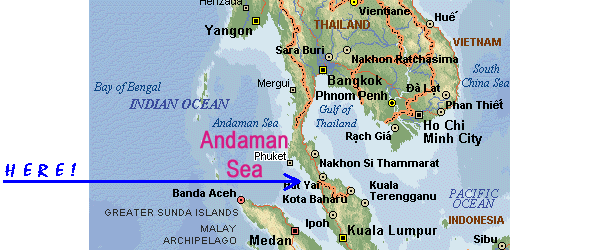After a side trip to Borneo our baby has arrived in 2003. He is now four years old and ready to take a challenge of stepping into the wild nature of Andaman.
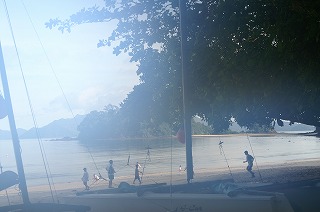
After a side trip to Borneo our baby has arrived in 2003. He is now four years old and ready to take a challenge of stepping into the wild nature of Andaman.

The main destination of this trip is Sukau – a villeage in the alongside of the biggest river in Borneo – Sukau river. There is a lodge called the Rainforest Lodge located in the distance of 2 hours jetty cruise from Sandakan.
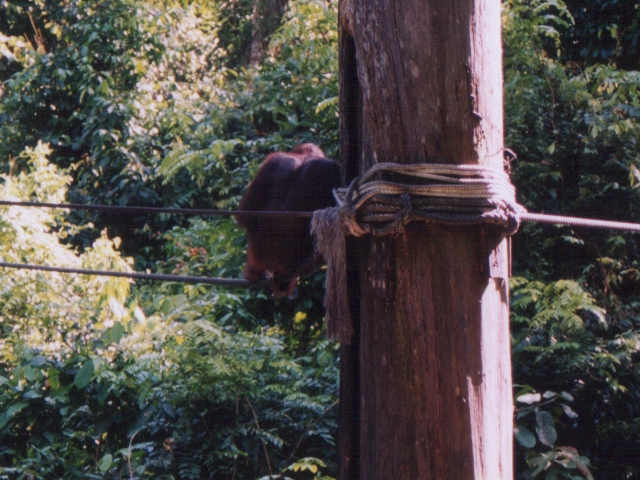
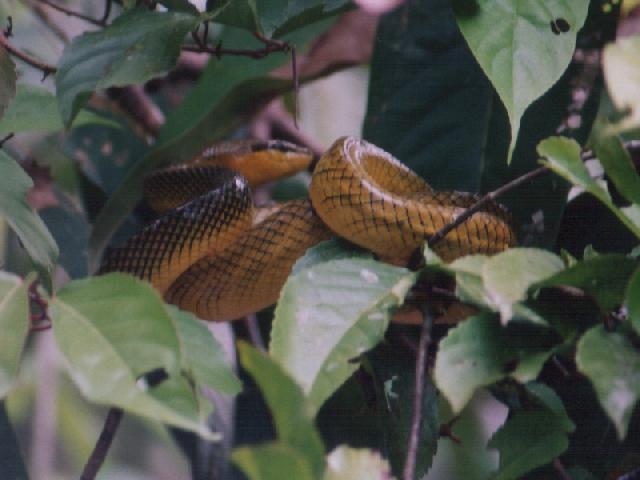
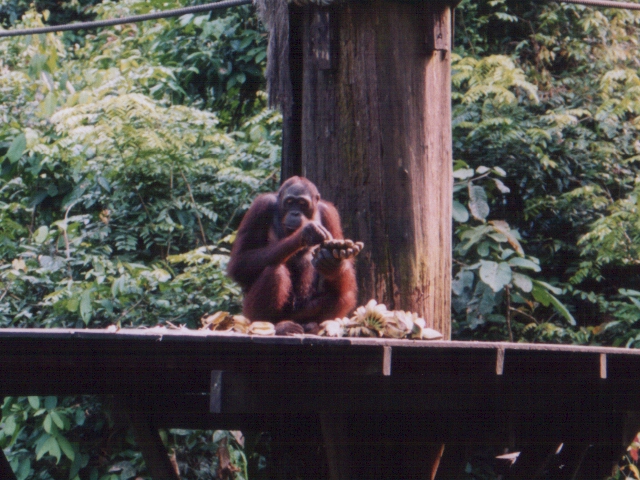


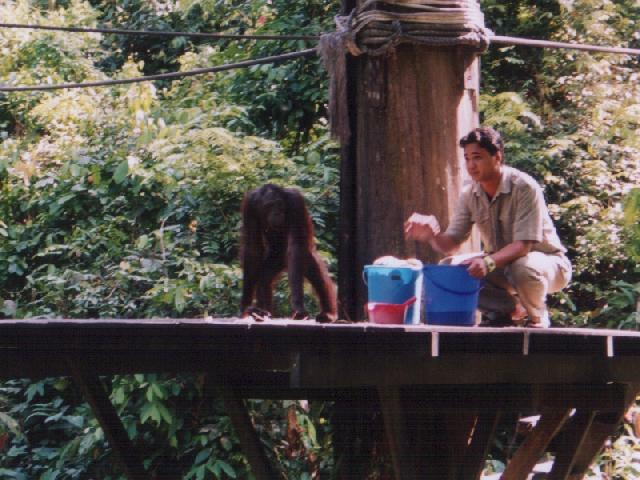



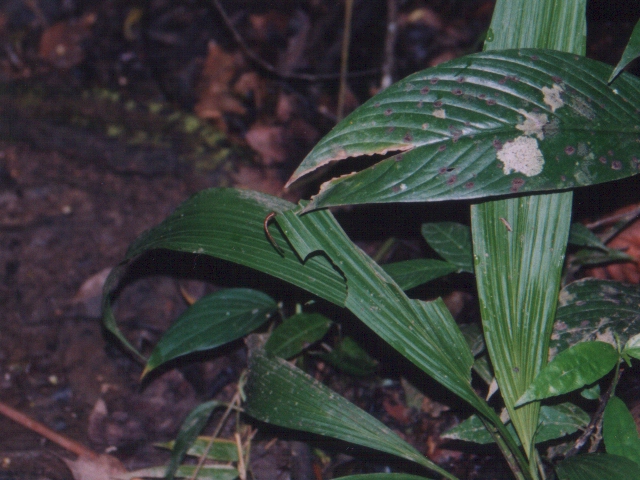

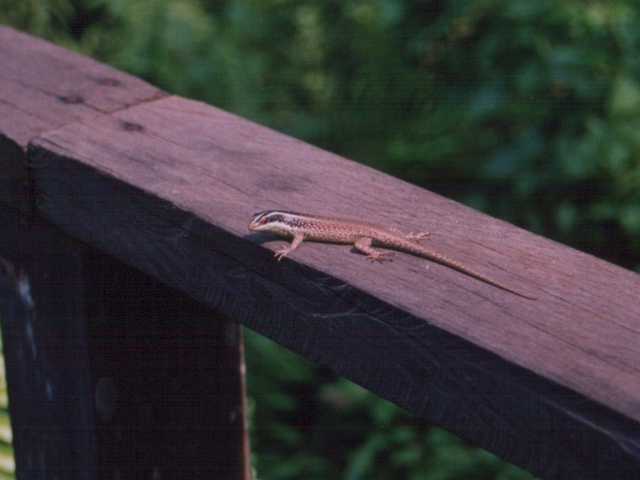

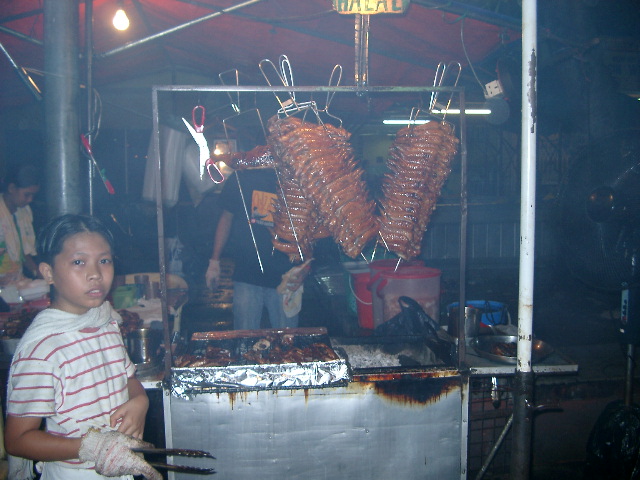
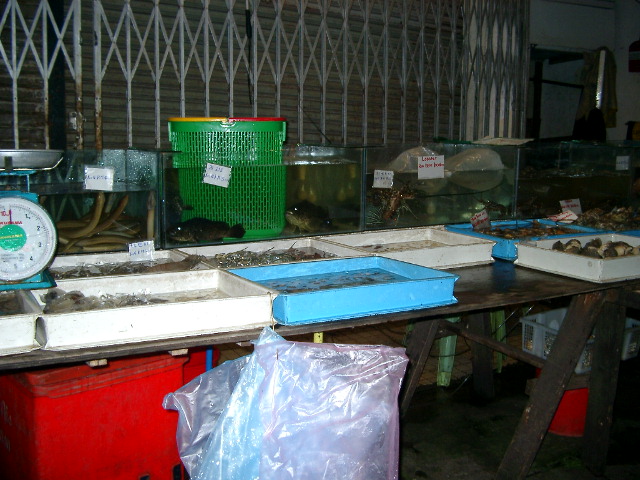

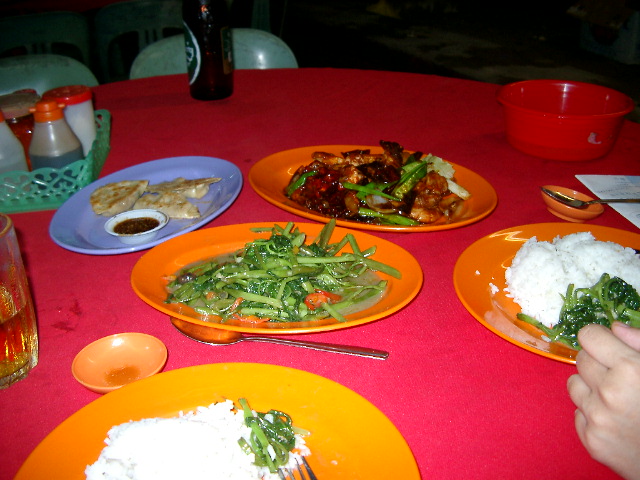


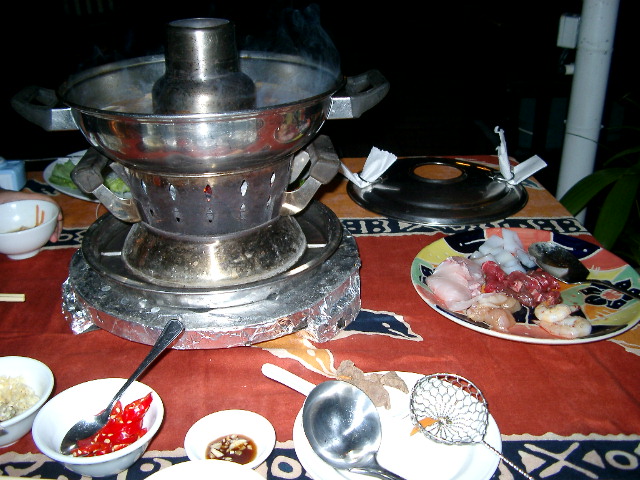
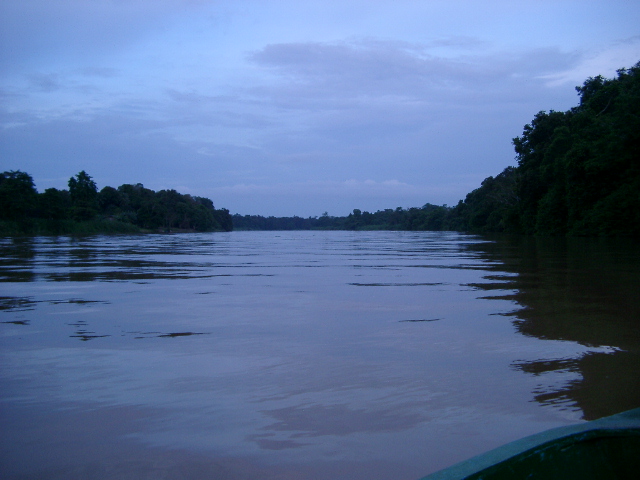

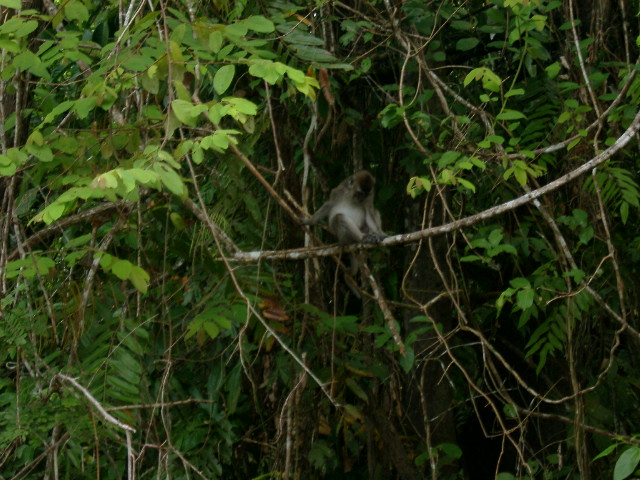
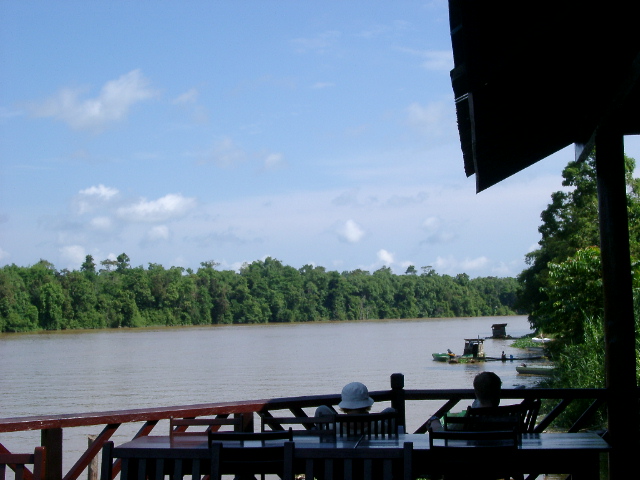
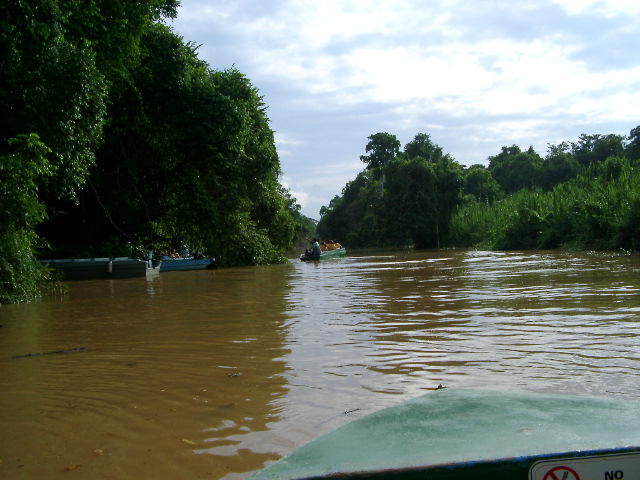

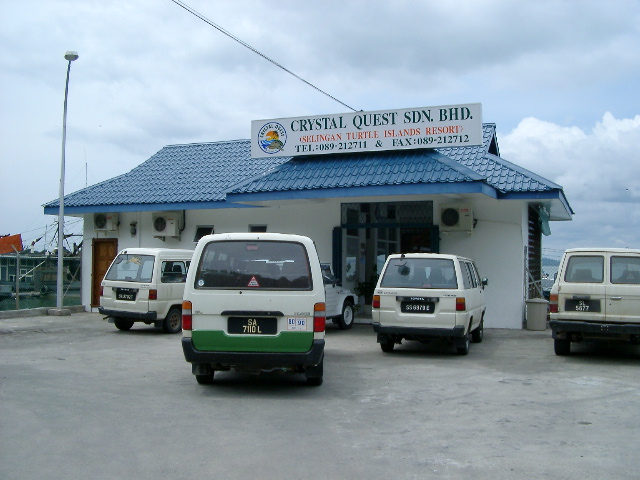
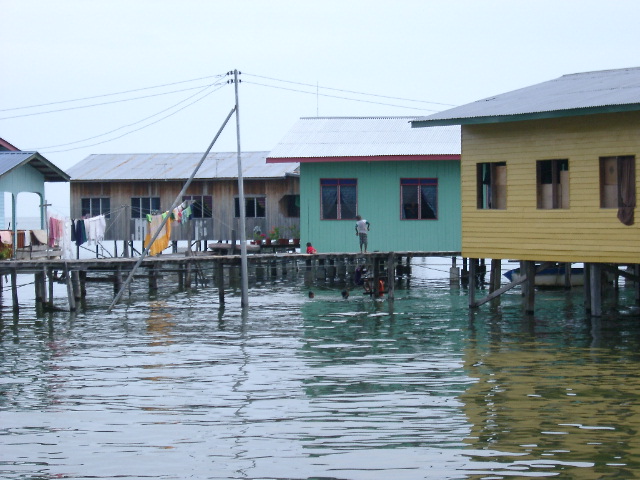
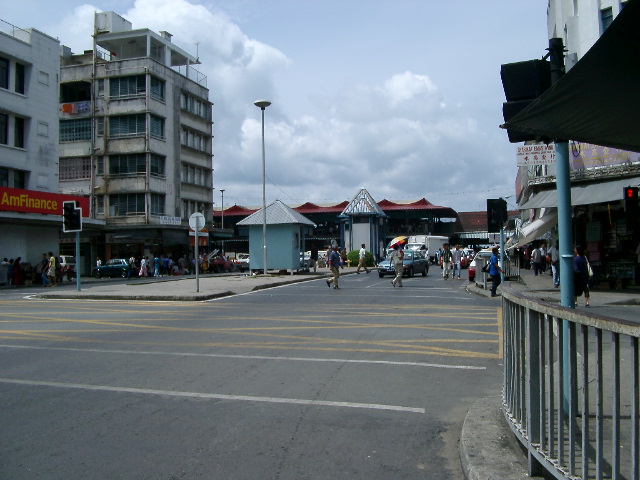
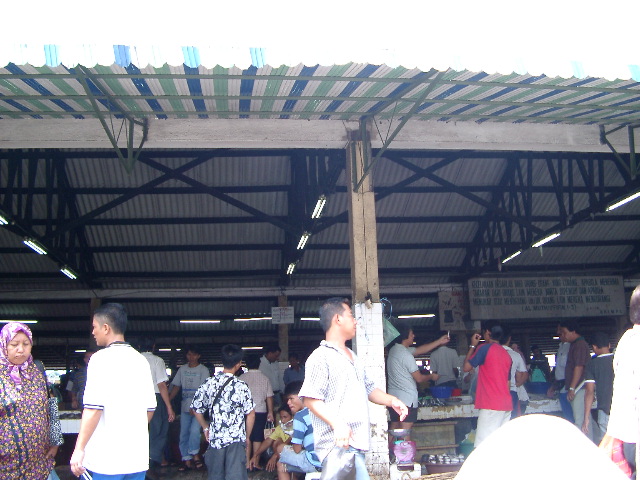
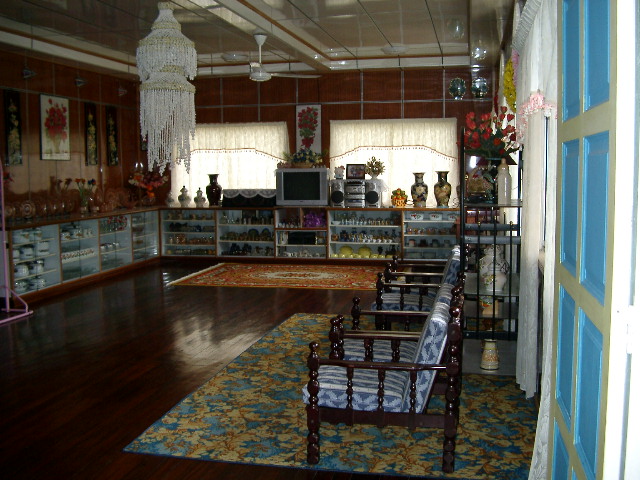
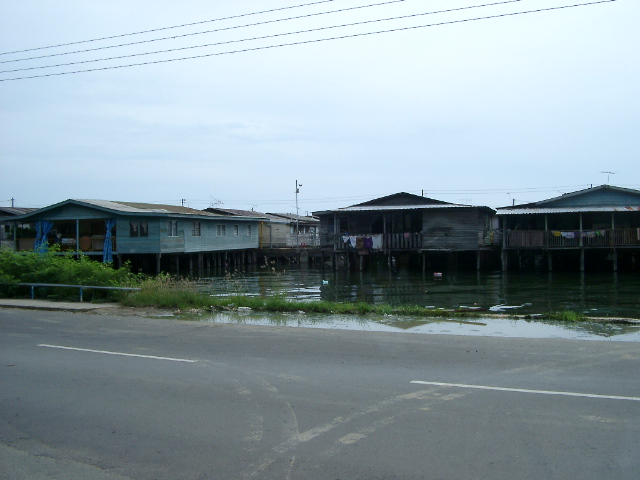




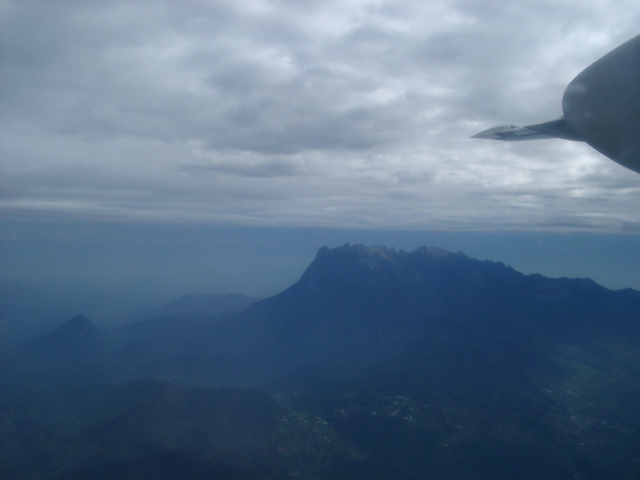

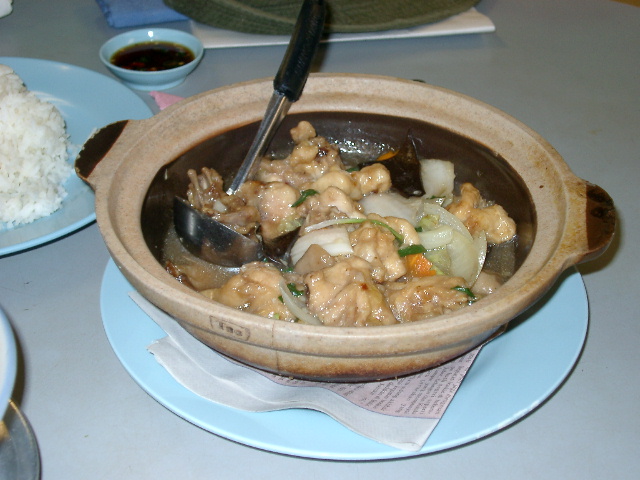
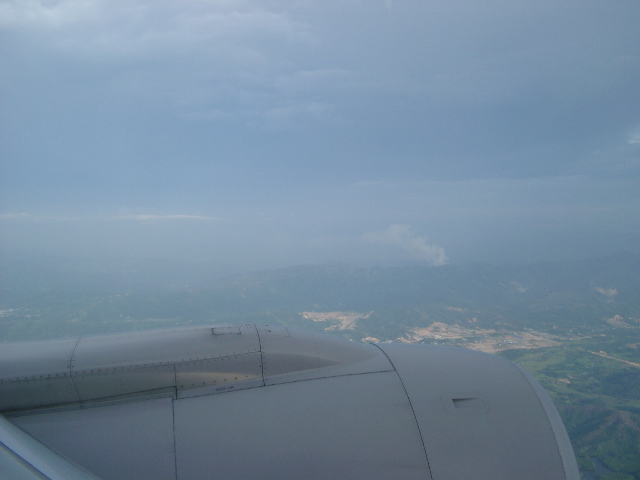

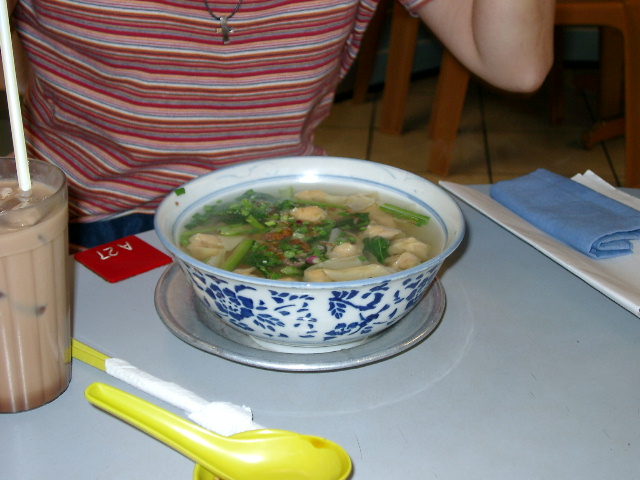
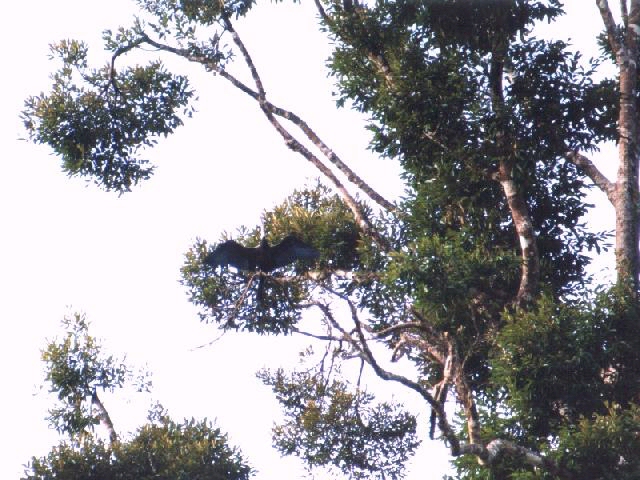
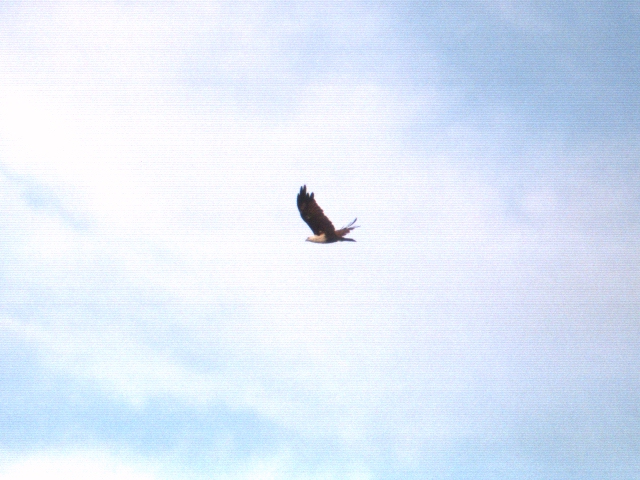

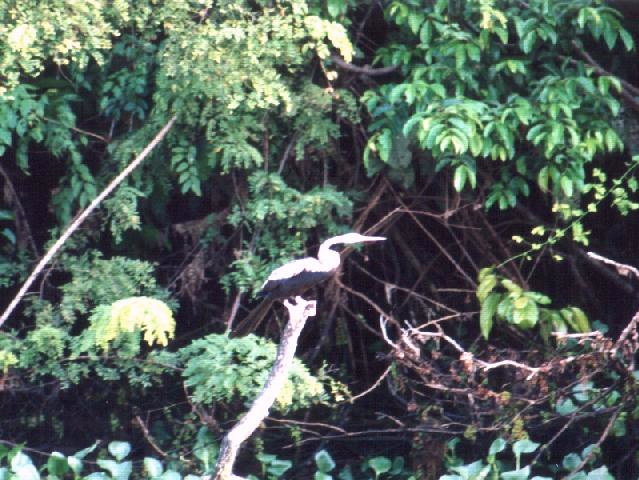
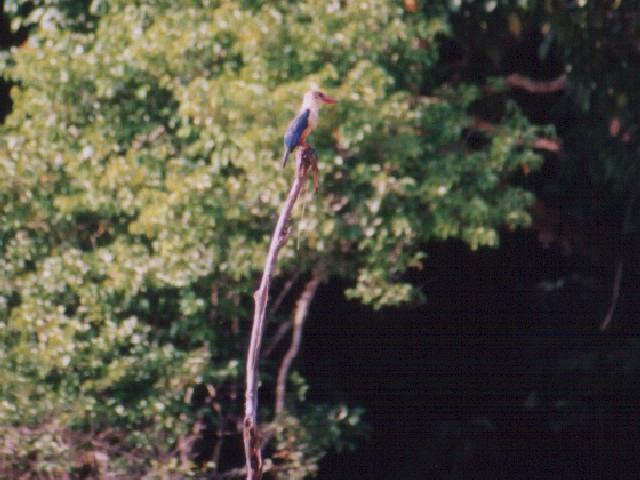




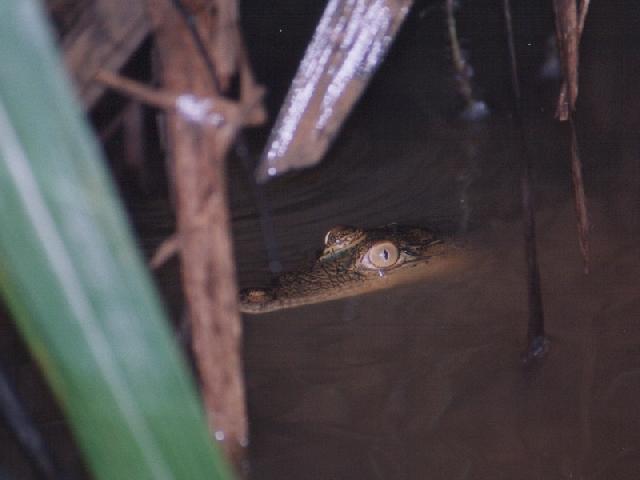

Sapi Island, one of the five islands under the Tunku Abdul Rahman Marine Park is only a 10-minute boar ride from the jetty located in the hotel we stayed. In order to avoid the tourists’ peak time, we took the earliest boat at 8:00 am. We could fully enjoy swimming in the blue water of the South China Sea and the colorful marine life when snorkelling with few people around us, which was very nice.

School of fish.
Countless number of fish are in schools.

Small jungle trecking in Sapi island.
After that we explored the little trail by ourselves. Unfortunately, we could not see any animals but Takao had found a feather of hornbill. Local people said that there lives only a couple of hornbill in the island, that means we are vary lucky. From the length of the feather (21 cm), I can tell hornbill is such a huge bird.
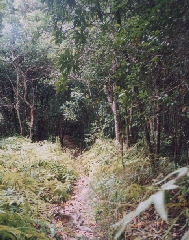
Animal trail.
More and more tourists were brought to the island by 10:00 am’s boat because BBQ lunch is arranged on the beach at noon. The beach has become noisy and we returned to our hotel by 11:00 am’s boat.

A feather of Hornbill bird found in the trecking.
Click on the image to jump to Wild Nature of Andaman -> 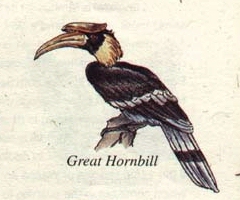
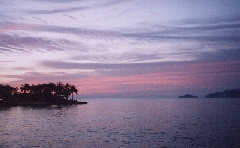
Evening on the sea.
This photo has nothing to do with the Sapi Island but I want to show you this beautiful landscape of sunset.

Location
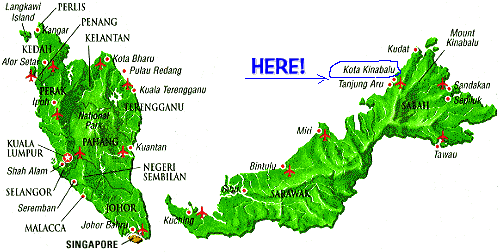
Our destination of this year was Sabah, Borneo in East Malaysia which is well known as a place of ancient rainforest and as a treasury of wild animals and rare plants. Since our trip was just for six days we could not explorer the whole area. We see neither Orang-Utang nor Rafflesia this time. We will come back to KK…
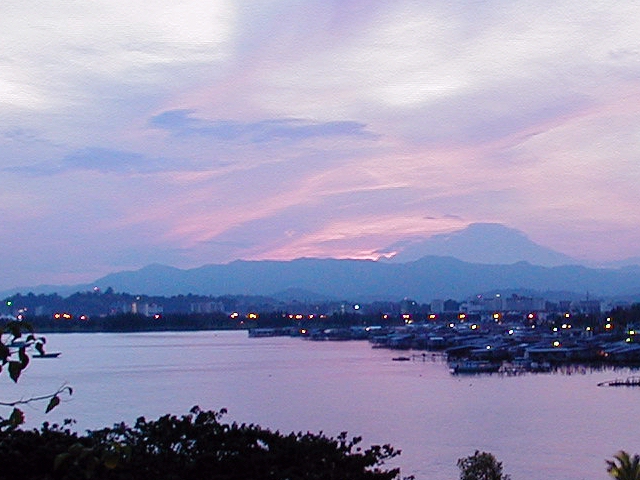
The Park encompasses an area of 754 sq. km .has one of the most diverse flora and fauna populations in the world and is home to innumerable species of exotic plants, including the Pitcher Plant. There is a Canopy Walkway, a suspension bridge 200 feet above ground suspended between the tops of the trees. Originally built for research purposes, the Walkway is open to tourists so that they can enjoy a better view of the rainforests.
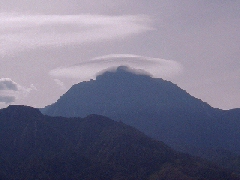
The focal point of the park is Mt. Kinabalu, with its highest point that stands at 4,095.2 m above the sea level.

I was not afraid of the height, because I grew up living in a high-rise apartment. Takao, on the other hand, was very much afraid of the height and he became stuck in the middle of the Walkway.
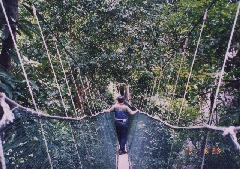
Takao, shaking in the middle of the Walkway.
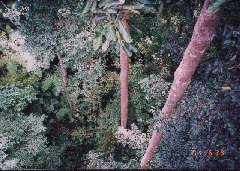
Never look down !
A photo taken from the Walkway.
We attended an educational tour, during which we observed various kinds of plants.
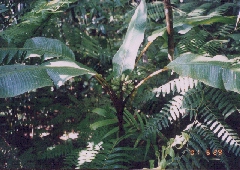
Wild Bananas.
Not good for eating.
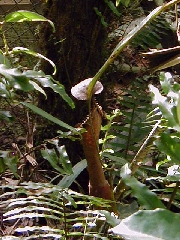
Pitcher Plant.
Extraordinary carnivorous plants, which supplement their diet by catching and digesting insects.
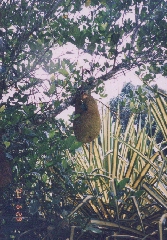
Jack Fruit.
One of famous tropical fruits.
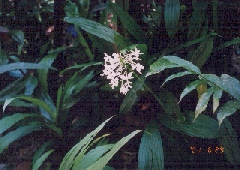
Wild Orchid.
There are estimated 1,000 species of Orchid in the park.
Unlike some resort hotels, where palm trees are artificially planted, the Andaman Resort is situated in an environment that is natural. The number on the map represents the area where the animal, bird or reptile was sited. Click on the number to see a picture of the animal.
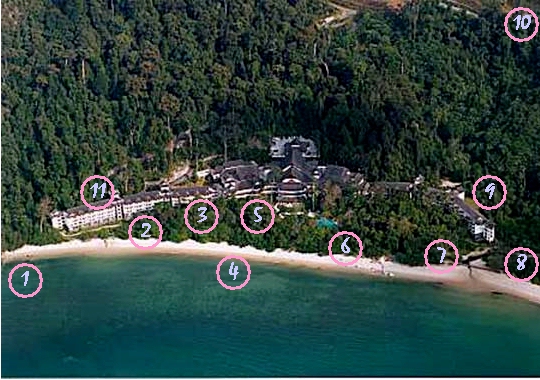
| # | (English) | (Japanese) | # | (English) | (Japanese) |
| 1 | Monkey | Saru | 6 | Hermit Crab | Yadokari |
| 2 | Squirrel | Risu | 7 | Mud Crab | Kani |
| 3 | Tokay Gecko | Yamori | 8 | Great Hornbill | Sai-cho |
| 4 | Sea Cucumber | Namako | 9 | Wild Boar | Inoshishi |
| 5 | Monitor Lizard | Oo-togage | 10 | Anthill (Termit) | Ari-zuka (Shiro-ari) |
| 11 | Lizard | Tokage |
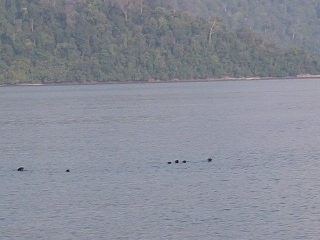
Believe or not, those black points on sea surface are head of monkeys. When we were taking a walk along the beach at 8:30 am in the morning we saw a family of monkeys jump out from the bushes and start swimming into the sea. According to the hotel’s naturalist, they swim, for fun and not for hunting purpose.
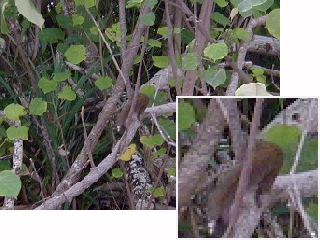
Though it was rather rare experience to meet a wild boar or a great hornbill, you can see squirrels all over the place.
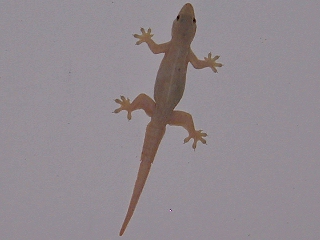
You can see many geckos at night outside the hotel buildings, but most of them are small ones. This one was as large as 30 cm in length. We found out that large one is called “Tokay Gecko” (the world largest and noisiest).

This picture was taken in September 1998, when we first visited the Andaman. In Japan we eat sea cucumber but we have never seen one alive. We were so impressed that we tried to find one each time we returned, but were unable to.
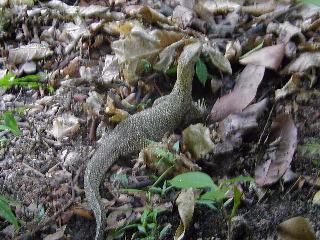
You can see this monitor lizard in the daytime on the lawn near the poolside trying to catch worms with his long tongue. According to the hotel staff, his mother was very popular among visitors because she was friendly and came to the poolside restaurant to beg for food. She even sunbathed on the poolside along with hotel visitors. This story has become the legend at hotel.
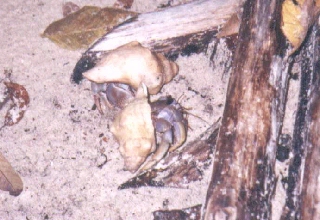
We saw hermit crab twice on the way back from our dinner. Seems like they are active at night.
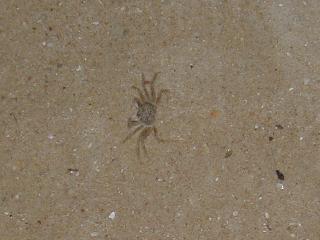
There are so many kinds of crabs and this is only of them. It is called ‘Ghost’ crab because it moves too fast to be seen.
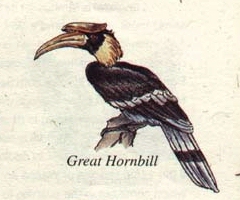
This is the one I had seen in the picture book when I was a little kid. Then, I saw the real one, finally!!. It was around 8:30 am. I saw three of them plucking fruit. They flew away when they saw me. According to the hotel staff, I was very lucky to see the great hornbills. I think that was because I was taking a walk alone (which means no conversation). Takao missed hornbills because he was still in the bed.

While Takao and I were walking along a small trail, we bumped into a family of wild boar crossing the trail 10 meter ahead. The mother boar let her babies go first and then she noticed our existence. She stared at us in a threatening way. We held our breath and stood still to let her know that we did not mean to hurt her children. Three minutes later she left. Although the experience was scary at the time it was also thrilling to be so close to a family of boar. You can see why we did not reach for our camera ti take a picture.
We have got a comment from the resident naturalist that the boar in the picture is not the same kind we met across. The one in the picture is ‘Sus Burbatus’ but the one we met should have been ‘Sus Scrota’. Thanks to Dave!
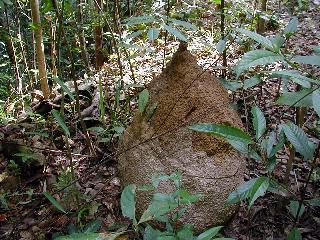
This anthill was found when we were doing “jungle trek”.

We met this lovely tiny lizard at the hotel corridor near our room when we came back from the outing to a local orchard arranged by the hotel. The red local fruit is called “Rambutan”, freshly plucked by us. Local people like rambutan very much and some eat 100 per a day. It tasted like a lichee.
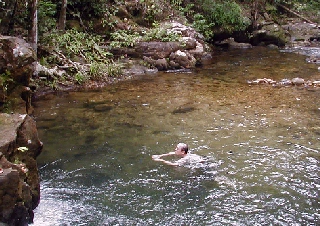
Guess who?
My husband, Takao and I have spent our summer holidays in the Andaman Resort, in Langkawi island, Malaysia. This last trip was our third visit in three years since spending our honeymoon there in 1998. My friends always ask me “Why do you like that place so much? What is so special?” The answer is simple. Instead of fancy boutiques and museums, the island is home to one of the world’s oldest rain Forrests with a marvelous, self-contained world of nature. This web-site will introduce you to the wild animals, birds and reptiles we saw during our stay in the Andaman. Click on the map below to see photos of wild animal with the birds’-eye view of the Andaman Resort.
